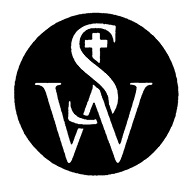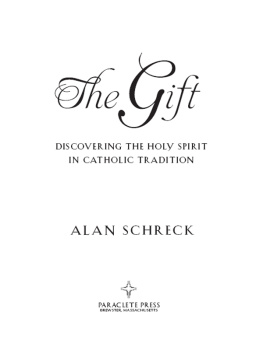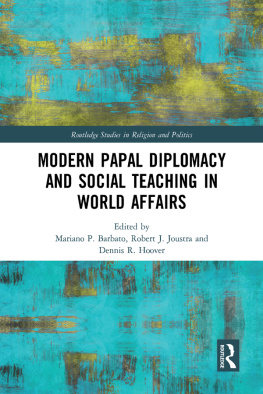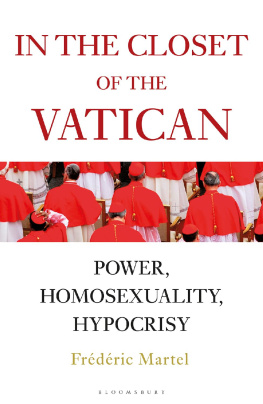The Global Vatican
The Global Vatican
An Inside Look at the Catholic Church, World Politics, and the Extraordinary Relationship between the United States and the Holy See
Francis Rooney
Former Ambassador to the Holy See

A Sheed & Ward Book
ROWMAN & LITTLEFIELD
Lanham Boulder New York Toronto Plymouth, UK
A Sheed & Ward Book
Published by Rowman & Littlefield
4501 Forbes Boulevard, Suite 200, Lanham, Maryland 20706
www.rowman.com
10 Thornbury Road, Plymouth PL6 7PP, United Kingdom
Distributed by National Book Network
Copyright 2013 by Rowman & Littlefield
All rights reserved. No part of this book may be reproduced in any form or by any electronic or mechanical means, including information storage and retrieval systems, without written permission from the publisher, except by a reviewer who may quote passages in a review.
British Library Cataloguing in Publication Information Available
Library of Congress Cataloging-in-Publication Data
Rooney, Francis.
The global Vatican : an inside look at the Catholic church, world politics, and the extraordinary relationship between the United States and the Holy See / Francis Rooney.
pages cm
Includes bibliographical references and index.
ISBN 978-1-4422-2361-5 (cloth : alk. paper) ISBN 978-1-4422-2362-2 (ebook) 1. Catholic ChurchForeign relationsUnited States. 2. United StatesForeign relationsCatholic Church. 3. Catholic ChurchForeign relations. I. Title.
BX1406.3.R665 2013
327.456'34073dc23
2013018732
 The paper used in this publication meets the minimum requirements of American National Standard for Information SciencesPermanence of Paper for Printed Library Materials, ANSI/NISO Z39.48-1992.
The paper used in this publication meets the minimum requirements of American National Standard for Information SciencesPermanence of Paper for Printed Library Materials, ANSI/NISO Z39.48-1992.
Printed in the United States of America
Foreword
M any, if not most, U.S. diplomats have at least some dealings with their Vatican counterparts during the course of their foreign service careers. For my part, I witnessed the leadership role played by papal nuncios in assignments to three different countries in Latin America. At other postings, such as Vietnam in the 1960s and Iraq in the last decade, I witnessed the plight of Catholic populations, frightened and uprooted by ideological or sectarian conflict. And I was privileged to meet Pope John Paul II during his pastoral visits to three of my ambassadorial postings: Honduras, Mexico, and the Philippines. One has to personally witness such a papal visit to a predominantly Catholic country to appreciate the enormous spiritual and emotional influence these events can have on a country.
I first met Ambassador Francis Rooney in June 2007, when I accompanied President Bush on his visit to Rome and the Vatican. Both of us escorted President and Mrs. Bush on their call on Pope Benedict and, as it turned out, both of us were with the president after leaving the Vatican during those tense moments when his limousine momentarily stalled on the way to our next destination.
I appreciated then and have come to appreciate more, Ambassador Rooneys thoughtful, even scholarly approach to his assignment. What he has done in this book is to provide us with a very readable account of the U.S.-Vatican relationships since the founding of our nation. He also traces the growing importance over time of the Catholic Church in our country. Ambassador Rooney intertwines this very interesting history with relevant reflections and anecdotes from his tour of duty as our envoy to the Vatican.
In this era of globalization, it is key to remember that the Catholic Church has been a global institution for centuries. That fact, combined with the growing numbers of Catholics in the United States, now some 25 percent of the adult population, makes understanding the Vatican and its policies an ever more important part of our diplomacy. Ambassador Rooneys book is an important contribution to that understanding.
John Negroponte
Former Deputy Secretary of State
Washington, D.C.
June 2013
Prologue
Introduction to an Education
I.
M onsignor Caputo came to Villa Richardson on a bright morning in late October, two days after my wife, Kathleen, and I landed in Rome to begin my appointment as the U.S. ambassador to the Holy See. An aide led him up the short flight of stairs to the sunroom at the back of the residence, where we were still unpacking boxes. As I shook the monsignors hand, he struck me as a man well suited to his position as the Vaticans head of protocol. He was tall, with neatly clipped black hair, and a calm demeanor, fully at ease yet not a bit informal. Like many Vatican officials, he had been educated in the Pontifical Ecclesiastic Academy, the esteemed three-hundred-year-old diplomatic school associated with the Vatican, and was fluent in four languages. His English, like everything else about him, was impeccable.
Mr. Ambassador, he announced after wed exchange a few pleasantries, I have the honor of informing you that the Holy Father will grant an audience for your credentialing on the morning of Saturday, November 12.
I should point out that in the forty-eight hours between our arrival in Rome and Monsignor Tommaso Caputos visit that morning I had already learned a few important lessons about this new job. I had learned, for example, that when a new U.S. ambassador to the Holy See lands at Romes Fiumicino Airport, he is immediately escorted off the plane by Italian police and taken to a private lounge, where he is greeted by various dignitaries and the press and expected to deliver a coherent speech. Diplomacy is a serious matter in Italy and much attention is focused on any ambassador representing the United States.
Something else I had learned since our landing was that American ambassadors to the Holy See have many privileges, but the ability to move freely about Rome is not one of them. From the moment we arrived, every step outside the confines of the residence or the embassy had to be coordinated with the embassys security detail. We would come to be highly appreciative of the embassy staff and the Italian secret service for their capable execution of the security regimen, but it took a bit of getting used to in those early days.
I knew the learning curve would be steep in Rome, but I had arrived as prepared as possible. My Catholic background, from my long-ago Sunday mornings as an altar boy at Sacred Heart Church in Muskogee, Oklahoma, through my education by the Jesuits at Georgetown Preparatory School and Georgetown University in Washington, was a good start. After law school and prior to the Vatican, Id devoted most of my life, together with Kathleen, to building a family and a group of businesses. My career took me to many parts of the world, especially in Latin America, and gave me the opportunity to see, firsthand, the issues facing a church serving more than 1 billion members in 196 countries.
After President George W. Bush appointed me as ambassador to the Holy See in the winter of 2005, and prior to Senate confirmation and our departure for Rome, Kathleen and I had both launched into a crash course in church history and Vatican diplomacy, aided by a comprehensive reading list provided by the State Department. The State Department, of course, has a program for ensuring that incoming ambassadors receive the information they need to be effective upon arrival. This includes consultations with various policy experts in areas of concern to the Vatican mission and others within the department who work to support our missions abroad. There was also a two-week ambassadors seminar conducted in the State Departments main building and at the George P. Shultz National Foreign Affairs Training Center in Arlington, Virginia, where Kathleen and I were joined by several other newly appointed ambassador-designates and their spouses. In addition to the State Department program, I was fortunate to receive generous help and advice from former Holy See ambassadors, church leaders, and scholars. By the time we landed in Rome, I was confident that I had a pretty good grasp of the task before me. But I also had plenty more to learn.
Next page




![Avro Manhattan - The Vatican in World Politics [full]](/uploads/posts/book/256164/thumbs/avro-manhattan-the-vatican-in-world-politics.jpg)



 The paper used in this publication meets the minimum requirements of American National Standard for Information SciencesPermanence of Paper for Printed Library Materials, ANSI/NISO Z39.48-1992.
The paper used in this publication meets the minimum requirements of American National Standard for Information SciencesPermanence of Paper for Printed Library Materials, ANSI/NISO Z39.48-1992.